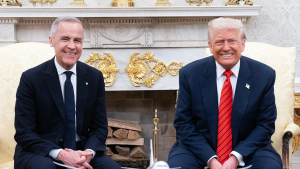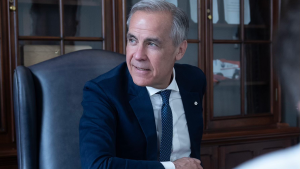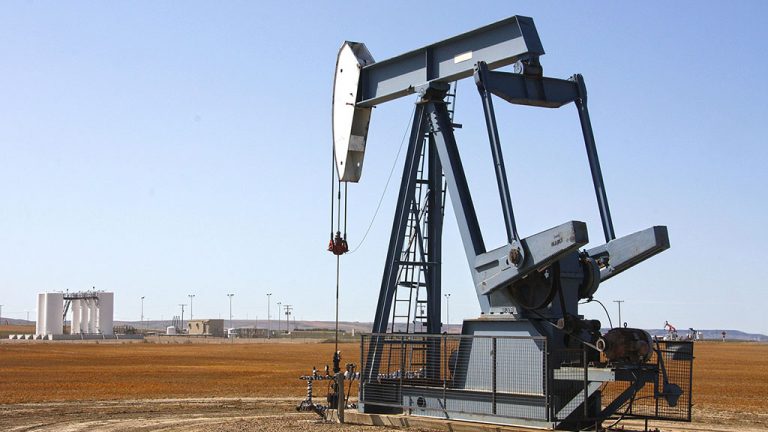The federal government has introduced a slate of policies in the past week indicating it is determined to secure enough skilled trades workers to deliver Canada’s growing pipeline of traditional construction projects as well as ensuring workers have the right skills to handle evolving technologies, construction analysts say.
On Nov. 1 federal Minister of Immigration Sean Fraser announced significantly higher annual immigration targets that will include a new stream of skilled construction workers.
Two days later, in her fall economic update, Minister of Finance Chrystia Freeland kept her foot on the pedal, advancing a suite of initiatives supporting the innovation economy and clean energy sector and pledging to train workers to deliver those projects.
“This past week, there’s been a lot of announcements and a lot of recognition of the important role that our sector is going to play,” said Ken Lancastle, COO of the Mechanical Contractors Association of Canada.
Addressing the fiscal update, Lancastle said, “We were pleased by the minister’s recognition of the trades and the industry, especially with respect to any transition to the net-zero economy or to increase energy efficiency. There was that underlying theme that our sector and the people in our sector are going to play a critical role.”
On immigration, Lancastle added, “We’re looking forward to engaging with Citizenship and Immigration on some of those topics, on how can we help to transition these immigrants into the types of work that’s going to be not just short-term work but sustainable long-term careers.”
Canada’s Building Trades Unions (CBTU) executive director Sean Strickland attended the immigration announcement, which was held at the Finishing Trades Institute in Toronto. Fraser announced the federal government was setting new, higher immigration targets for the next three years, increasing the numbers of permanent residents from the current 405,000 to 500,000 in 2025. The government will also shift its focus in the Express Entry system to target various new streams of immigrants including the manufacturing, building trades and STEM sectors.
Strickland said it has only been in the last 18 months that the construction sector has realized its traditional recruiting strategies were not adequate to meet workforce needs. He also noted as a result of the pandemic, about 55,000 construction workers decided to take early retirement.
The CBTU was in the process of developing an immigration pilot project but Strickland said that will probably not be necessary with the new dedicated construction stream announced by Fraser.
He said the CBTU has been tasked by the minister to conduct more research over the next half-year to determine what specific trades will be needed in the future, how many workers will be needed and in which parts of the country.
“The minister has given us this task,” said Strickland. “We’re in the process of gathering that information right now.”
Strickland said it was encouraging that the economic update linked investments in new energy sectors such as hydrogen and small modular reactors to “good-paying jobs.”
The two stakeholders noted the government recognizes the need to keep pace with new initiatives from the Joe Biden administration, which through its Inflation Reduction Act is spending billions on innovation in the clean energy sector.
Freeland said Canada will support hydrogen projects and others in the clean energy sector through its new Canada Growth Fund, through tax credits for clean technologies, and by introducing a new tax on share buybacks by public corporations in Canada.
To ensure Canada has the workforce to deliver those projects, Freeland announced a new Sustainable Jobs Training Centre that would bring together workers, unions, employers and training institutions to help 15,000 workers upgrade or gain new skills. Among the sectors mentioned were the sustainable battery industry and low-carbon building and retrofits.
As well, Freeland announced a new sustainable jobs stream under the Union Training and Innovation Program, expected to upskill 20,000 apprentices and journeypersons with new green-sector training.
“That Sustainable Jobs Training Centre piece, that’s really interesting because it’s something that has been part of our dialogue throughout the past year, the need to have a better understanding of what skills are going to be required moving forward,” said Lancastle.
“It really is an acknowledgement that the industry needs to be at the table alongside policy-makers, unions and training institutions to really identify what types of skills and what types of people we’re going to need in order to move this forward.”
Strickland also identified the Temporary Foreign Workers program as another policy sector needing major reform, with the Labour Market Impact Assessment tool especially ripe for change.
“Government officials are making determinations on labour availability without broad enough consultation and without enough knowledge of local markets, labour needs and requirements and so we need to be consulted on that,” he said.
In addition, prevailing wage rates and living conditions for foreign workers need “serious overhaul,” Strickland said, and discussions on allowing unions to sponsor temporary foreign workers with an eye to providing a pathway to citizenships also need to take place.
Canada Growth Fund to be launched by year’s end
Finance Minister Chrystia Freeland’s economic update offered further details on projects to be supported by the new Canada Growth Fund and established a timetable for launch — by the end of this year.
The Growth Fund, announced in the spring federal budget, will be capitalized with $15 billion and is to be established as a subsidiary of the Canada Development Investment Corporation. A technical paper released by the government stated the fund is not targeting R and D but rather would take a go-to-market approach.
The new Inflation Reduction Act (IRA) in the United States has created particular urgency for Canada to act, stated the paper. The IRA includes US$369 billion in new climate and energy spending to find new areas of growth in the American economy.
Among the growth fund’s priority will be the deployment of key technologies, such as low-carbon hydrogen and carbon capture, utilization and storage. Biofuels projects will also be targeted.
The growth fund will develop an investment pipeline in two ways: actively identifying and engaging with key constituencies, such as investors, emitters or clean technology companies; and developing an application process for the private sector to submit investment opportunities.
Follow the author on Twitter @DonWall_DCN.











Recent Comments
comments for this post are closed